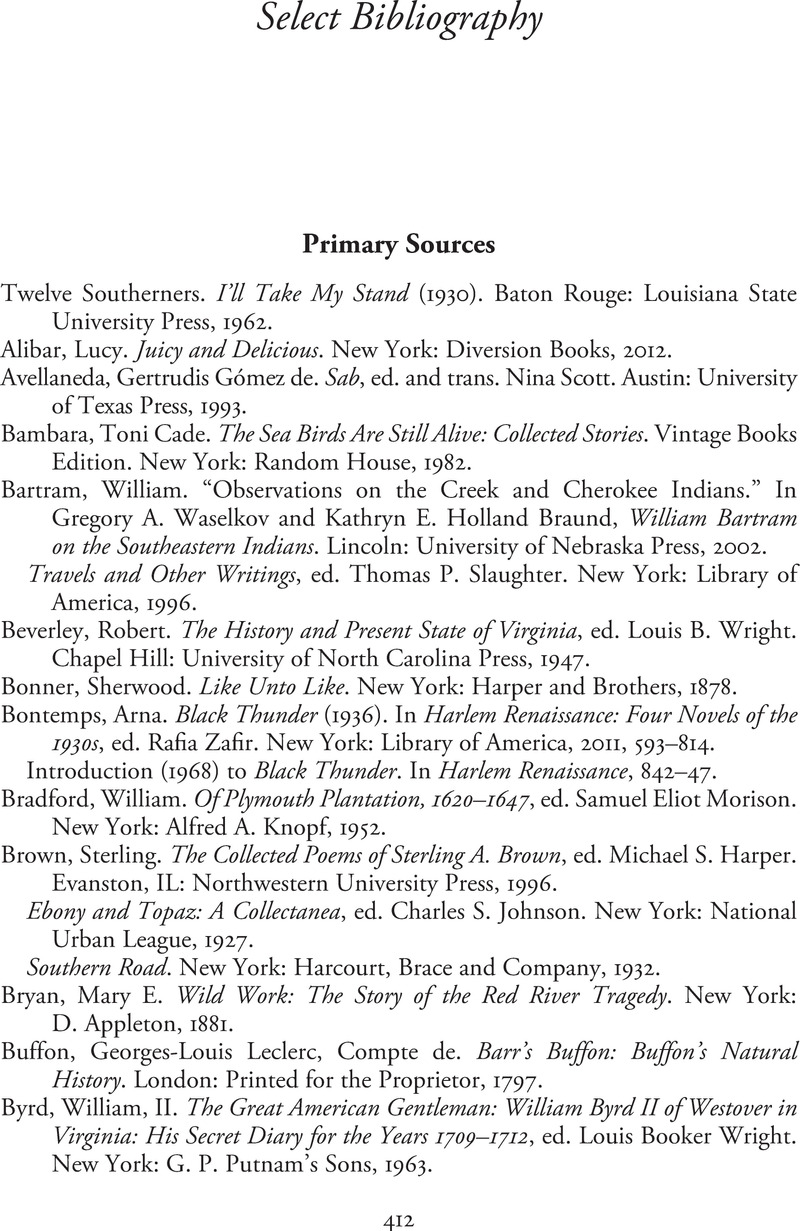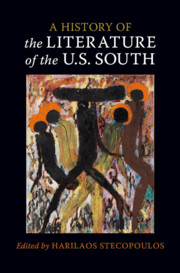Book contents
- A History of the Literature of the U.S. South
- A History of the Literature of the U.S. South
- Copyright page
- Contents
- Contributors
- Acknowledgements
- Introduction
- Chapter 1 Fictions of the Native South
- Chapter 2 John Smith and the English Origins of Southern Exceptionalism
- Chapter 3 Plantation and Enlightenment
- Chapter 4 Geoconfederacy
- Chapter 5 In the Shadow of His Office
- Chapter 6 Shadows of Haiti
- Chapter 7 “Midnight Bakings” Amid Starvation
- Chapter 8 A Calculated Fiction
- Chapter 9 Maroons and Marronage in Antebellum African American Literature
- Chapter 10 Everyday Literary Culture in the Nineteenth Century
- Chapter 11 Fables of the Bloody Shirt
- Chapter 12 A Heritage Unique in the Ages
- Chapter 13 Moonlight and Magnolias No More
- Chapter 14 Women Writers and the Southern Renaissance; or, the Work of Gender in Literary Periodization
- Chapter 15 Southern Geographies and New Negro Modernism
- Chapter 16 “A fine loud grabble and snatch of AAA and WPA”
- Chapter 17 Provincialism as a Positive Good
- Chapter 18 Faulkner’s Untimely Fiction
- Chapter 19 Reconsidering Du Bois’s “Central Text”
- Chapter 20 Cultural Activism and Theater of the Civil Rights Movement
- Chapter 21 Till the Hurt Becomes Music
- Chapter 22 Undead Sound
- Chapter 23 There Is No South
- Chapter 24 Hurricane Alley
- Select Bibliography
- Index
- References
Select Bibliography
Published online by Cambridge University Press: 29 April 2021
- A History of the Literature of the U.S. South
- A History of the Literature of the U.S. South
- Copyright page
- Contents
- Contributors
- Acknowledgements
- Introduction
- Chapter 1 Fictions of the Native South
- Chapter 2 John Smith and the English Origins of Southern Exceptionalism
- Chapter 3 Plantation and Enlightenment
- Chapter 4 Geoconfederacy
- Chapter 5 In the Shadow of His Office
- Chapter 6 Shadows of Haiti
- Chapter 7 “Midnight Bakings” Amid Starvation
- Chapter 8 A Calculated Fiction
- Chapter 9 Maroons and Marronage in Antebellum African American Literature
- Chapter 10 Everyday Literary Culture in the Nineteenth Century
- Chapter 11 Fables of the Bloody Shirt
- Chapter 12 A Heritage Unique in the Ages
- Chapter 13 Moonlight and Magnolias No More
- Chapter 14 Women Writers and the Southern Renaissance; or, the Work of Gender in Literary Periodization
- Chapter 15 Southern Geographies and New Negro Modernism
- Chapter 16 “A fine loud grabble and snatch of AAA and WPA”
- Chapter 17 Provincialism as a Positive Good
- Chapter 18 Faulkner’s Untimely Fiction
- Chapter 19 Reconsidering Du Bois’s “Central Text”
- Chapter 20 Cultural Activism and Theater of the Civil Rights Movement
- Chapter 21 Till the Hurt Becomes Music
- Chapter 22 Undead Sound
- Chapter 23 There Is No South
- Chapter 24 Hurricane Alley
- Select Bibliography
- Index
- References
Summary

- Type
- Chapter
- Information
- A History of the Literature of the U.S. South , pp. 412 - 445Publisher: Cambridge University PressPrint publication year: 2021

